Maximising the benefits of GCC economic zones
30 September 2022
The global rise of special economic zones (SEZs), including logistical hubs, free zones and industrial clusters, has been remarkable. In the 1980s, there were less than 200 worldwide, but today there are more than 7,000 in over 140 countries.
The GCC is at the vanguard of this growth. And with good reason.
Global competition to attract companies to SEZs is fierce, but the geographic advantage that GCC countries enjoy at the nexus of East and West remains as strong as it did centuries ago.
Now, the region connects billions of people seamlessly via some of the planet’s most sophisticated airports, ports and business-friendly SEZs.
GCC SEZs
Currently, there are more than 70 SEZs across the GCC, with 47 in the UAE alone. Saudi Arabia and Oman have 10 each, Kuwait has four, Bahrain three and Qatar two, but ambitious plans will cause these numbers to soar, particularly in Saudi Arabia and UAE.
However, when it comes to SEZs, it should not just be about quantity.
It is essential that SEZs deliver win-win solutions for the countries that invest in them as well as the companies that use them.
And that means in return for SEZs delivering fiscal incentives, cost and custom benefits, seamless business processes and world-class infrastructure, it is vital that SEZ companies contribute to the national economy, create jobs, inspire innovation, drive economic diversification and become powerful enablers of economic development.
A world-famous example is Jebel Ali Free Zone (Jafza).
When Jafza was launched in 1985, there were just 19 companies in the zone. Today Jafza accounts for almost 24 per cent of Dubai’s foreign direct investments. The free zone has 9,000 registered businesses from more than 130 countries, employs over 135,000 people and generated AED454bn ($123.6bn) in trade in 2021, a year-on-year increase of 19 per cent.
A key lesson of successful SEZs, especially in light of the supply chain shocks of the pandemic, is to provide future-proof, lower-cost close access to the suppliers and partners that really matter
Stand-out lessons
Since 1985, the region has learned a lot about maximising the benefits of SEZs and several lessons stand out.
The first is clustering together interconnected businesses or industries, such as Dubai Media City, which brings together a media community of freelancers, small and medium-sized enterprises (SMEs) and global media brands, and Saudi Arabia's PlasChem Park, a cluster devoted exclusively to chemical and conversion industries.
Close proximity between competing businesses inevitably drives productivity and innovation as companies aim to outperform one another. But proximity equally encourages replication as well as the collaborations and partnerships that lead to the new products, processes, services and revenue streams that drive sector growth.
Clusters also attract high concentrations of skilled specialists and labour. As these people share valuable knowledge, they create a focused pool of talent.
Meanwhile, for small and developing companies, clusters provide opportunities to thrive, learn from industry leaders, leverage economies of scale and explore the innovative niches that could transform their industry.
Another key lesson of successful SEZs, especially in light of the supply chain shocks of the pandemic, is to provide future-proof, lower-cost close access to the suppliers and partners that really matter.
A striking example of this is the metals cluster at Khalifa Industrial Zone Abu Dhabi (Kizad). Not only does this cluster provide reliable access to raw materials, but it also facilitates an innovative form of delivery. ‘Hot metal road’, as it is known, transports aluminium in molten form direct to downstream companies, saving them the huge energy costs needed to melt their own raw aluminium.
We need to leverage the close proximity of industrial cluster companies to accelerate the transition to clean energy, better energy efficiency and new technologies such as carbon capture
Tech and sustainability
So, looking ahead, how can the benefits of SEZs be enhanced in future?
Without a doubt, technology and sustainability must play key roles.
The Internet of Things, advanced robotics, 3D printing and big data are reshaping our world and global value chains and will undoubtedly be at the heart of transforming the GCC’s SEZs.
SEZs must also rise to the challenge of sustainability. With Bahrain, the UAE and Saudi Arabia all committed to net-zero emission targets between 2050 and 2060, and industry responsible for 30 per cent of global CO2 emissions, industrial clusters must work together to achieve these targets.
That is why we need to leverage the close proximity of industrial cluster companies to accelerate the transition to clean energy, better energy efficiency and new technologies such as carbon capture.
The $500bn Neom project in Saudi Arabia, for instance, promises to be an outstanding example of both technological advancement and sustainable achievement in an unprecedented special economic zone that will cover an area the size of Belgium.
The zone, ultimately home to nine million people, will run on 100 per cent renewable energy and aims to lead the world in areas such as artificial intelligence, advanced robotics, data centres and virtual reality.
These are undoubtedly fascinating times for GCC SEZs, and I look forward to the next exciting chapter in their evolution.

Exclusive from Meed
-
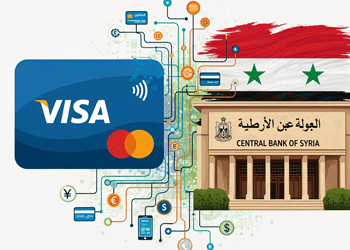 Visa agrees to support digital payments in Syria
Visa agrees to support digital payments in Syria5 December 2025
-
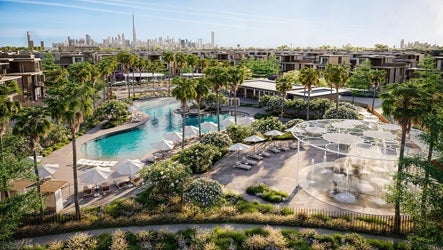 Meraas announces next phase of Nad Al-Sheba Gardens
Meraas announces next phase of Nad Al-Sheba Gardens5 December 2025
-
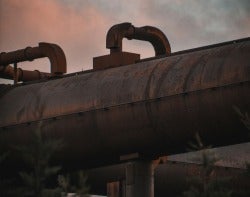 Frontrunner emerges for Riyadh-Qassim IWTP
Frontrunner emerges for Riyadh-Qassim IWTP5 December 2025
-
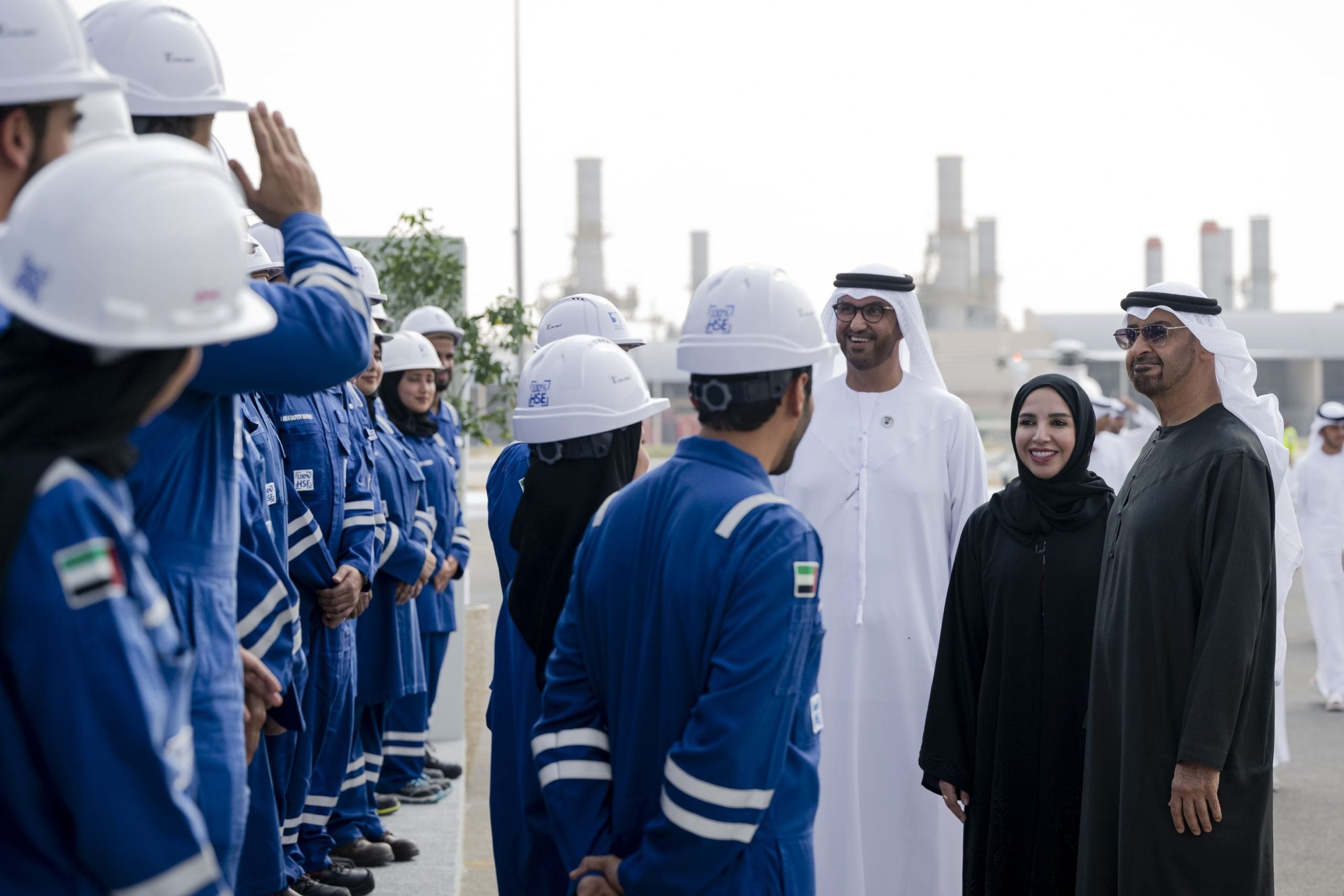 Adnoc creates new company to operate Ghasha concession
Adnoc creates new company to operate Ghasha concession5 December 2025
-
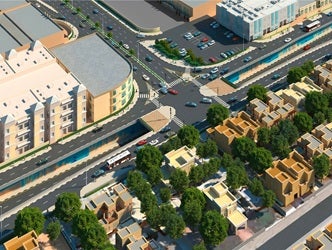 Dubai RTA announces Al-Wasl road development project
Dubai RTA announces Al-Wasl road development project5 December 2025
All of this is only 1% of what MEED.com has to offer
Subscribe now and unlock all the 153,671 articles on MEED.com
- All the latest news, data, and market intelligence across MENA at your fingerprints
- First-hand updates and inside information on projects, clients and competitors that matter to you
- 20 years' archive of information, data, and news for you to access at your convenience
- Strategize to succeed and minimise risks with timely analysis of current and future market trends

Related Articles
-
 Visa agrees to support digital payments in Syria
Visa agrees to support digital payments in Syria5 December 2025
Visa and the Central Bank of Syria have agreed on a strategic roadmap that will allow the US-based card and digital payments company to begin operations in Syria and support the development of a modern digital payments system.
Under the agreement, Visa will work with licensed Syrian financial institutions under a phased plan to establish a secure foundation for digital payments.
The early stages will involve Visa supporting the central bank in issuing Europay, Mastercard and Visa (EMV)-compliant payment cards and enabling tokenised digital wallets – bringing the country in line with internationally interoperable standards.
Visa will also provide access to its platforms, including near-field communication (NFC) and QR-based payments, invest in local capacity building and support local entrepreneurs seeking to develop solutions leveraging Visa’s global platform.
“A reliable and transparent payment system is the bedrock of economic recovery and a catalyst that builds the confidence required for broader investment to flow into the country,” noted Visa’s senior VP for the Levant, Leila Serhan. “This partnership is about choosing a path where Syria can leapfrog decades of legacy infrastructure development and immediately adopt the secure, open platforms that power modern commerce.”
The move marks one of the most significant steps yet in Syria’s slow and uneven return to the formal global financial system and carries implications that reach beyond just payments technology.
It lays the groundwork for overturning more than a decade of financial isolation in which Syria has operated largely outside global banking and settlement networks.
Visa’s entry will not erase all existing barriers – as many restrictions remain in force and will continue to shape what is practically possible – but its support signals a reopening of channels that could smooth Syria’s reintegration into financial networks.
The involvement of the US-based payments provider is also a further tacit sign of the US government’s enthusiastic bear hug of the new post-Assad Syrian government under President Ahmed Al-Sharaa.
For investors assessing long-term opportunities, the presence of a globally recognised payments operator will provide reassurance that Syria’s financial system is returning to international norms, and the security and transparency that comes with it.
https://image.digitalinsightresearch.in/uploads/NewsArticle/15207198/main.gif -
 Meraas announces next phase of Nad Al-Sheba Gardens
Meraas announces next phase of Nad Al-Sheba Gardens5 December 2025
Dubai-based real estate developer Meraas Holding, which is part of Dubai Holding, has announced the eleventh and final phase of its Nad Al-Sheba Gardens residential community in Dubai.
It includes the development of 210 new villas and townhouses and a school, which will be located at the northwest corner of the development.
The latest announcement follows Meraas awarding a AED690m ($188m) contract for the construction of the fourth phase of the Nad Al-Sheba Gardens community in May, as MEED reported.
The contract was awarded to local firm Bhatia General Contracting.
The scope of the contract covers the construction of 92 townhouses, 96 villas and two pool houses.
The contract award came after Dubai-based investment company Shamal Holding awarded an estimated AED80m ($21m) contract to UK-based McLaren Construction last year for the Nad Al-Sheba Gardens mall.
The project covers the construction and interior fit-out of a two-storey mall, covering an area of approximately 12,600 square metres.
The UAE’s heightened real estate activity is in line with UK analytics firm GlobalData’s forecast that the construction industry in the country will register annual growth of 3.9% in 2025-27, supported by investments in infrastructure, renewable energy, oil and gas, housing, industrial and tourism projects.
The residential construction sector is expected to record an annual average growth rate of 2.7% in 2025-28, supported by private investments in the residential housing sector, along with government initiatives to meet rising housing demand.
https://image.digitalinsightresearch.in/uploads/NewsArticle/15206904/main.jpg -
 Frontrunner emerges for Riyadh-Qassim IWTP
Frontrunner emerges for Riyadh-Qassim IWTP5 December 2025

Saudi Arabia’s Vision Invest has emerged as frontrunner for the contract to develop the Riyadh-Qassim independent water transmission pipeline (IWTP) project, according to sources.
State water offtaker Saudi Water Partnership Company (SWPC) is preparing to award the contract for the IWTP "in the coming weeks", the sources told MEED.
The project, valued at about $2bn, will have a transmission capacity of 685,000 cubic metres a day. It will include a pipeline length of 859 kilometres (km) and a total storage capacity of 1.59 million cubic metres.
In September, MEED reported that bids had been submitted by two consortiums and one individual company.
The first consortium comprises Saudi firms Al-Jomaih Energy & Water, Al-Khorayef Water & Power Technologies, AlBawani Capital and Buhur for Investment Company.
The second consortium comprises Bahrain/Saudi Arabia-based Lamar Holding, the UAE's Etihad Water & Electricity (Ewec) and China’s Shaanxi Construction Installation Group.
The third bid was submitted by Saudi Arabia's Vision Invest.
It is understood that financial and technical bids have now been opened and Vision Invest is likely to be awarded the deal.
The Riyadh-based investment and development company made a "very aggressive" offer, one source told MEED.
In November, the firm announced it had sold a 10% stake in Saudi Arabia-based Miahona as part of a strategy to reallocate capital "towards new and diversified investments".
The company did not disclose which projects the capital might be reallocated towards.
As MEED recently reported, Vision Invest is also bidding for two major packages under Dubai's $22bn tunnels programme in a consortium with France's Suez Water Company.
The Riyadh-Qassim transmission project is the third IWTP contract to be tendered by SWPC since 2022.
The first two are the 150km Rayis-Rabigh IWTP, which is under construction, and the 603km Jubail-Buraydah IWTP, the contract for which was awarded to a team of Riyadh-based companies comprising Al-Jomaih Energy & Water, Nesma Group and Buhur for Investment Company.
Like the first two IWTPs, the Riyadh-Qassim IWTP project will be developed using a 35-year build-own-operate-transfer contracting model.
Commercial operations are expected to commence in the first quarter of 2030.
https://image.digitalinsightresearch.in/uploads/NewsArticle/15206609/main.jpg -
 Adnoc creates new company to operate Ghasha concession
Adnoc creates new company to operate Ghasha concession5 December 2025
Register for MEED’s 14-day trial access
The board of directors of Abu Dhabi National Oil Company (Adnoc Group) has approved the establishment of a new company to operate the Ghasha offshore sour gas concession in Abu Dhabi waters.
The decision to create the new entity, to be called Adnoc Ghasha, was taken during a recent meeting of Adnoc Group’s board in Abu Dhabi, which was chaired by Sheikh Mohamed Bin Zayed Al-Nahyan, UAE President and Ruler of Abu Dhabi.
Adnoc Group owns and operates the Ghasha concession, holding the majority 55% stake. The other stakeholders in the asset are Italian energy major Eni with a 25% stake, Thailand’s PTTEP Holding, which holds a 10% interest, and Russia’s Lukoil, owning the remaining 10% stake.
The Ghasha concession consists of the Hail and Ghasha fields, along with the Hair Dalma, Satah al-Razboot (Sarb), Bu Haseer, Nasr, Shuwaihat and Mubarraz fields.
Adnoc expects total gas production from the concession to ramp up to more than 1.8 billion cubic feet a day (cf/d) before the end of the decade, along with 150,000 barrels a day of oil and condensates. This target will mainly be achieved through the Hail and Ghasha sour gas development project.
In October 2023, Adnoc and its partners awarded $16.94bn of engineering, procurement and construction (EPC) contracts for its Hail and Ghasha project – the biggest capital expenditure made by the Abu Dhabi energy company on a single project in its history.
Adnoc awarded the onshore EPC package to Italian contractor Tecnimont, while the offshore EPC package was awarded to a consortium of Abu Dhabi’s NMDC Energy and Italian contractor Saipem.
The $8.2bn contract relates to EPC work on offshore facilities, including facilities on artificial islands and subsea pipelines.
The Hail and Ghasha development will also feature a plant that will capture and purify carbon dioxide (CO2) emissions for sequestration (CCS), in line with Adnoc’s committed investment for a carbon capture capacity of almost 4 million tonnes a year (t/y). The CO2 recovery plant will have a total capacity to capture and store 1.5 million t/y of emissions from the Hail and Ghasha scheme.
Prior to reaching the final investment decision on the Hail and Ghasha project in 2023, the Ghasha concession partners, led by Adnoc, awarded two EPC contracts worth $1.46bn in November 2021 to execute offshore and onshore EPC works on the Dalma gas development project. The project will enable the Dalma field to produce about 340 million cf/d of natural gas.
https://image.digitalinsightresearch.in/uploads/NewsArticle/15206382/main2754.jpg -
 Dubai RTA announces Al-Wasl road development project
Dubai RTA announces Al-Wasl road development project5 December 2025
Register for MEED’s 14-day trial access
Dubai’s Roads & Transport Authority (RTA) has announced the Al-Wasl Road upgrade project, spanning 15 kilometres (km) from the intersection with Umm Suqeim Street to the junction with 2nd December Street.
The scheme includes upgrading six intersections – Al-Thanya, Al-Manara, Umm Al-Sheif, Umm Amara, Al-Orouba and Al-Safa streets – along with upgrading Al-Thanya Street and constructing five tunnels totalling 3.8km.
A new tunnel will be built at the intersection with Al-Manara Street. It will consist of three lanes and split into two routes: two lanes from Sheikh Zayed Road to Jumeirah Street and two lanes from Sheikh Zayed Road to Umm Suqeim Street, with a total capacity of 4,500 vehicles per hour.
The project also includes a 750m-long tunnel on Umm Al-Sheif Street, comprising two lanes from Sheikh Zayed Road to Jumeirah Street, accommodating up to 3,200 vehicles per hour.
A tunnel will be constructed at the intersection of Al-Wasl Road with Umm Amara Street, featuring two lanes in each direction, with a total length of 700m and a combined capacity of 6,400 vehicles per hour.
The road will also be widened from two to three lanes in each direction.
The project is expected to reduce travel times along Al-Wasl Road by 50% and increase capacity from 8,000 to 12,000 vehicles per hour in both directions.
Planning for growth
In March 2021, the government launched the Dubai 2040 Urban Master Plan. Its launch referenced studies indicating that the emirate’s population will reach 5.8 million by 2040, up from 3.3 million in 2020. The daytime population is set to increase from 4.5 million in 2020 to 7.8 million in 2040.
In December 2022, Sheikh Mohammed Bin Rashid Al-Maktoum, Vice President and Prime Minister of the UAE and Ruler of Dubai, approved the 20-Minute City Policy as part of the second phase of the Dubai 2040 Urban Master Plan.
In addition to the road projects, the RTA’s Dubai Metro Blue Line extension forms part of Dubai’s plans to improve residents’ quality of life by cutting journey times, as outlined in the policy.
The policy aims to ensure that residents can meet 80% of their daily requirements within a 20-minute journey time, on foot or by bicycle. This goal will be achieved by developing integrated service centres with all necessary facilities and by increasing population density around mass transit stations.
https://image.digitalinsightresearch.in/uploads/NewsArticle/15205950/main.jpg



